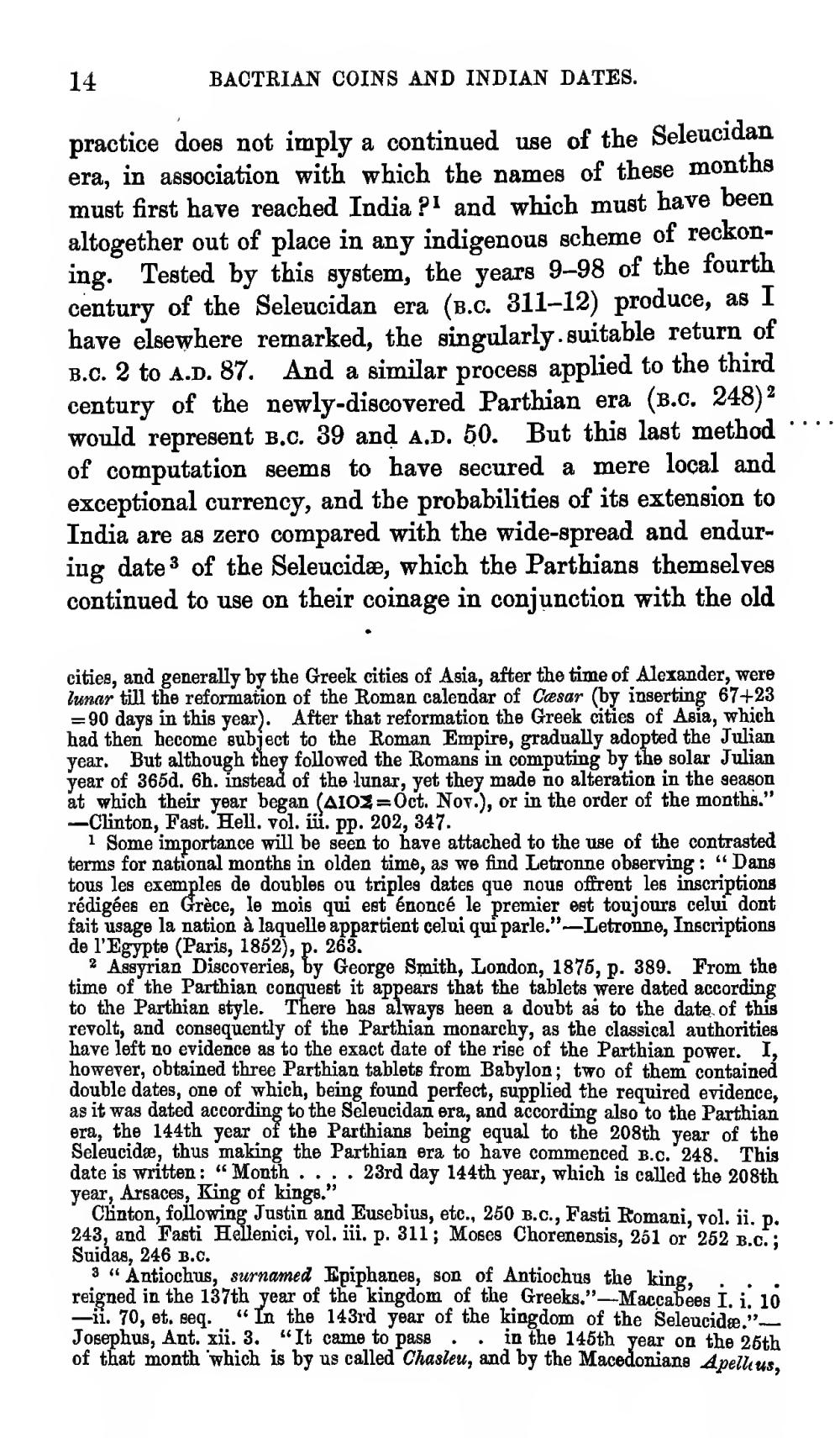________________
14
BACTRIAN COINS AND INDIAN DATES.
practice does not imply a continued use of the Seleucidan era, in association with which the names of these months must first have reached India ? and which must have been altogether out of place in any indigenous scheme of reckoning. Tested by this system, the years 9-98 of the fourth century of the Seleucidan era (B.c. 311-12) produce, as I have elsewhere remarked, the singularly.suitable return of B.C. 2 to A.D. 87. And a similar process applied to the third century of the newly-discovered Parthian era (B.c. 248)2 would represent B.C. 39 and A.D. 50. But this last method of computation seems to have secured a mere local and exceptional currency, and the probabilities of its extension to India are as zero compared with the wide-spread and enduring date of the Seleucidæ, which the Parthians themselves continued to use on their coinage in conjunction with the old
cities, and generally by the Greek cities of Asia, after the time of Alexander, were lunar till the reformation of the Roman calendar of Caesar (by inserting 67+23 =90 days in this year). After that reformation the Greek cities of Asia, which had then become subject to the Roman Empire, gradually adopted the Julian year. But although they followed the Romans in computing by the solar Julian year of 365d. 6h. instead of the lunar, yet they made no alteration in the season at which their year began (AIO2-Oct. Nov.), or in the order of the months." -Clinton, Fast. Hell. vol. ii. pp. 202, 347.
1 Some importance will be seen to have attached to the use of the contrasted terms for national months in olden time, as we find Letronne observing: "Dans tous les exemples de doubles ou triples dates que nous offrent les inscriptions rédigées en Grèce, le mois qui est énoncé le premier est toujours celui dont fait usage la nation à laquelle appartient celui qui parle."-Letronne, Inscriptions de l'Egypte (Paris, 1852), p. 263.
2 Assyrian Discoveries, by George Smith, London, 1875, p. 389. From the time of the Parthian conquest it appears that the tablets were dated according to the Parthian style. There has always been a doubt as to the date of this revolt, and consequently of the Parthian monarchy, as the classical authorities have left no evidence as to the exact date of the rise of the Parthian power. I, however, obtained three Parthian tablets from Babylon; two of them contained double dates, one of which, being found perfect, supplied the required evidence, as it was dated according to the Seleucidan era, and according also to the Parthian era, the 144th year of the Parthians being equal to the 208th year of the Seleucidæ, thus making the Parthian era to have commenced B.c. 248. This date is written: "Month .. 23rd day 144th year, which is called the 208th year, Arsaces, King of kings."
Clinton, following Justin and Eusebius, etc., 250 B.C., Fasti Romani, vol. ii. p. 243, and Fasti Hellenici, vol. iii. p. 311; Moses Chorenensis, 251 or 252 B.C.; Suidas, 246 B.C.
3 "Antiochus, surnamed Epiphanes, son of Antiochus the king, reigned in the 137th year of the kingdom of the Greeks."-Maccabees I. i. 10 -ii. 70, et. seq. "In the 143rd year of the kingdom of the Seleucidæ."Josephus, Ant. xii. 3. "It came to pass in the 145th year on the 25th of that month which is by us called Chasleu, and by the Macedonians Apelleus,
·
.




